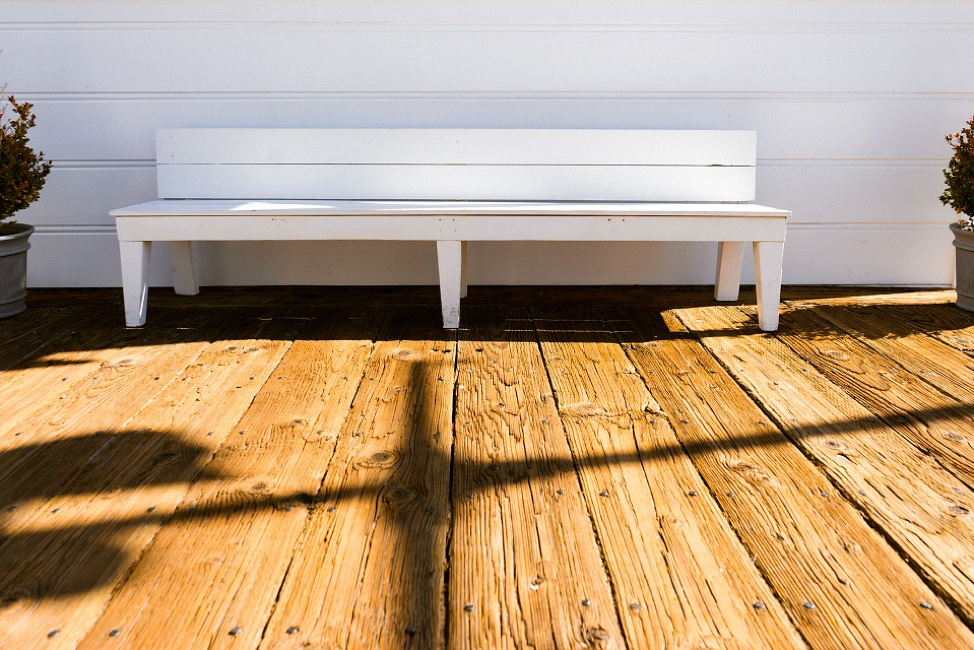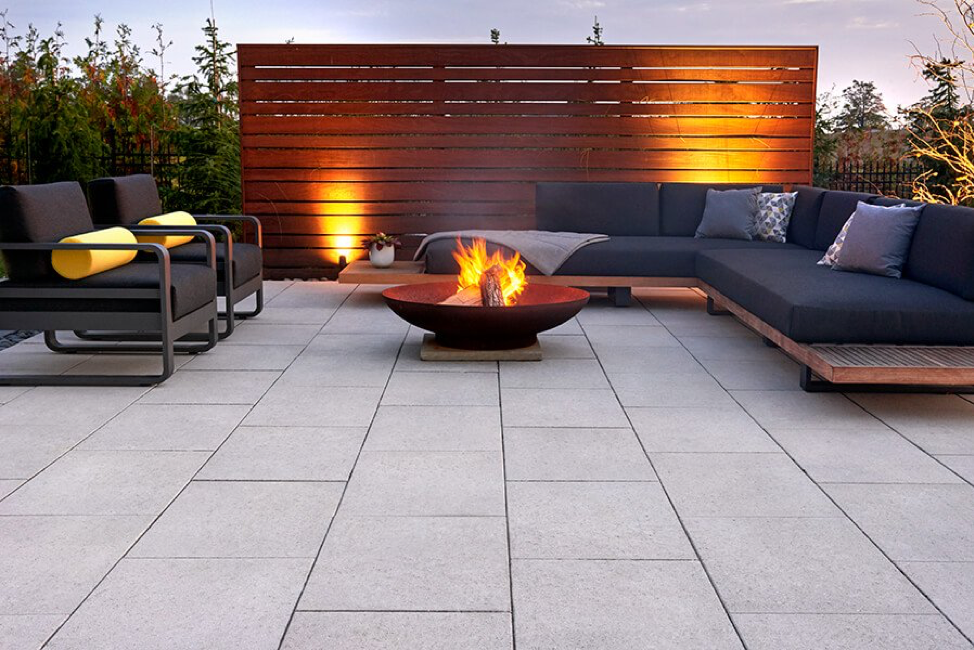If you’re looking to expand your outdoor living space this summer, you’ve no doubt been asked if you’re planning to build a deck or a patio. Both offer a beautiful way to enjoy your property, giving you space to eat, relax and entertain. Although on the surface patios and decks seem similar, there are, in fact, some key differences that could make one better suited to your property than the other.
Wood Deck or Concrete Patio: What’s the Difference?
A deck, typically made of wood or composite product, is a raised structure, most often attached to your house. Wooden decks can be a few inches or several feet above grade and require a supporting structure underneath. This structure is most often also made of wood but can be made with poured concrete pillars for extra strength.
By comparison, a backyard patio is more often made of concrete or stone. It typically sits at grade but can be raised if your property is on a slope. Because a back patio needs less structural support, it can be built next to your home, or elsewhere on your property to give you an opportunity to enjoy a garden or a pool, for example.
Why Choose a Wood Deck? Pros and Cons
 Source: Pixabay
Source: Pixabay
Design
Wooden decks feature a number of design possibilities. You can choose to build on a single level or use stairs to create a multi-level feature that feels a bit like a grown-up tree fort. And since you’ll need to paint or stain your wood to keep it looking good, your finished deck can come in almost any color you like and change colors every few years.
Cost
A wooden deck is not inexpensive to build, especially if you choose a premium material like cedar or composite decking. Raw materials can cost anywhere from $15 to $45 per square foot. The upside is that a wood deck is seen as a great investment in your property, providing a return on investment up to 75% if you sell your home. The downside is you’ll need to pay for ongoing maintenance.
Durability and Maintenance
Wood is an organic and porous material, making it susceptible to the elements and decomposition. You’ll need to clean your deck every year and reseal it every few years to prevent mold growth and water damage to keep your investment looking good. An unmaintained wood deck will only last about seven years, and even with proper maintenance, warped and aging deck boards must be replaced periodically.
Plus, wooden decks are the number one most failed home renovation project, which can be dangerous if its in use when it fails. This is especially true if you build on sloped ground. If the wooden posts aren’t installed correctly and inspected regularly, the integrity of the entire deck could be at risk.
Privacy
Because decks are raised, you often lose some of the privacy afforded by a backyard fence or other landscaping ideas. While it’s certainly possible to build additional screens and blinds, these additions can be costly and add additional maintenance.
Why Choose a Concrete Patio? Pros and Cons
 Featured product: Para patio slab
Featured product: Para patio slab
Design
A hardscape patio, using slabs or interlocking pavers, can take pretty much any shape you can imagine. Surround your pool, build an outdoor fire pit into it, or create a winding shape through your garden.
And while you don’t paint or stain a paver patio the way you do a wooden deck, modern concrete offerings come in a variety of styles, textures and finishes so the completed project can look like anything from granite to marble or even wood. Discover the Borealis Slabs, a wood look-a-like patio slab made of concrete offering the best of both worlds : the esthetic of natural wood will being while being weather-proof and maintenance-free!
Plus, if you live in a colder climate and still want your patio to be usable in the winter, you can have your pavers heated. It’ll make the pavers comfortable to walk on even in cold climates, letting you use the space all year round, instead of just in the warm summer months.
The only real limitation on the design of your backyard patio is the grade of your property. Before you build your paver patio, you need to make sure the ground underneath is relatively flat. Sloped properties are not necessarily a challenge for the creation of hardscape patios. With the use of segmental retaining walls, you can make a previously unusable space into a very functional, value-adding one.
If you have a steep slope, an outdoor patio can be cut into it or filled in to create a flatter area, both through the use of retaining walls. By using retaining walls, you can ensure the safety of whoever uses the patio, as you won’t be dependent on the integrity of wooden posts.
Cost
Depending on the material you choose, a concrete patio is a more affordable option than a wood deck. Concrete pavers have an average cost of $4 to $12 per square foot (before installation cost), while natural stone can go up to $30 per square foot.
Durability and Maintenance
When it comes to durability, a back patio will last for decades without any significant maintenance. There is no need to seal/reseal or restain concrete slabs or pavers, and the seams between these blocks will help protect your patio from cracking as a result of the ground settling or extreme weather. Modern pavers, like those from Techo-Bloc, are designed to keep their color and resist fading, so you shouldn’t need to replace them.
Techo-Bloc’s pavers are also backed by a lifetime transferable warranty, so they are protected for as long as you own the home, and the next owner will be protected too, adding to your home’s property value if you ever decide to sell.
Privacy
Because a paver patio is typically built at grade or close to it, you can take advantage of existing privacy features like fences and hedges, without having to build them taller as you do with a deck. Enjoy a quiet space to relax outdoors or to entertain friends without keeping an eye out for the nosy neighbors.
Which Should You Choose?
Whether you decide to build a wooden deck or a concrete patio will depend largely on your property, home and your budget. For an affordable, long-lasting outdoor space that you can customize exactly to your liking, the concrete patio idea is an attractive option.
Now that you're inspired, discover the products that will help you bring your landscape vision to life!

